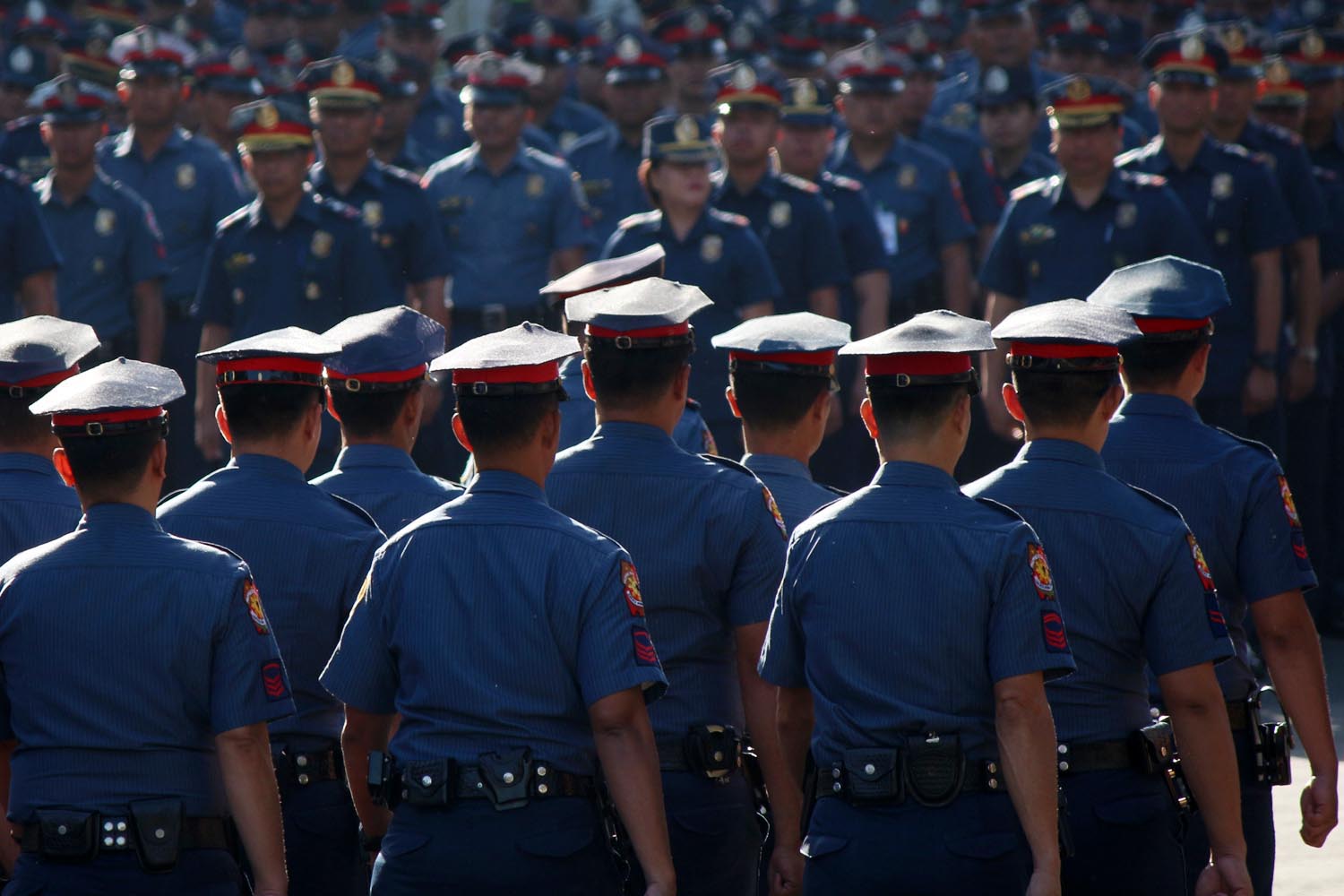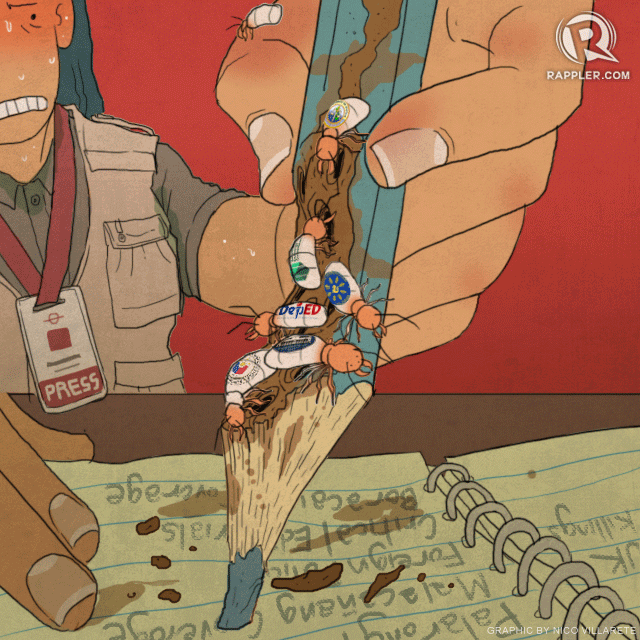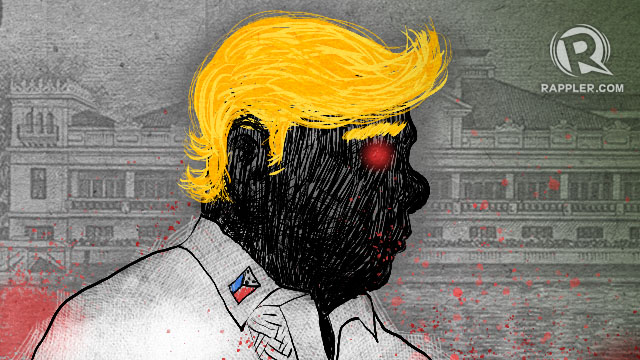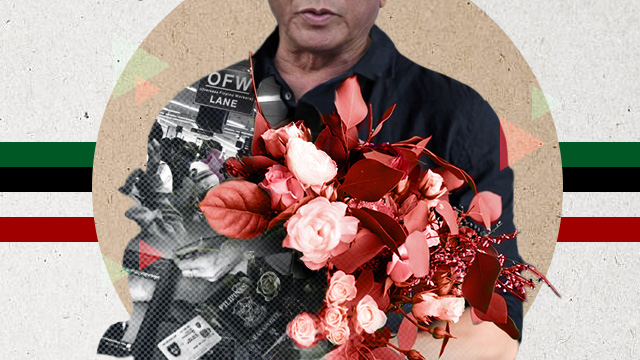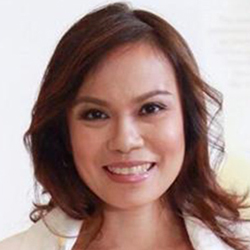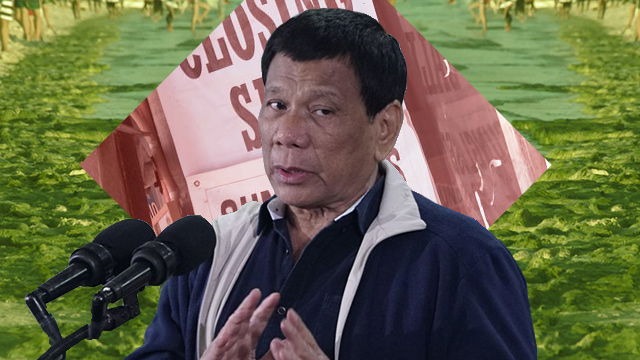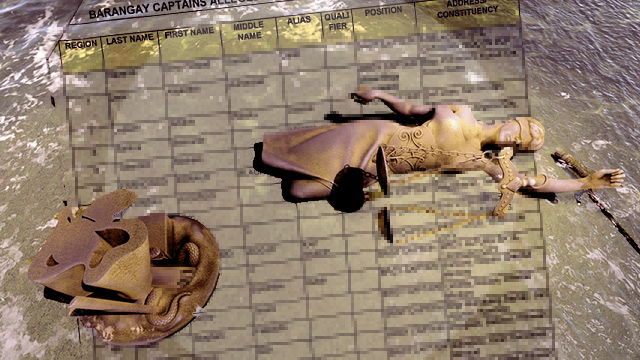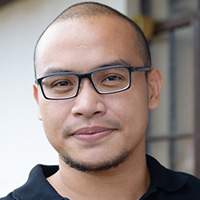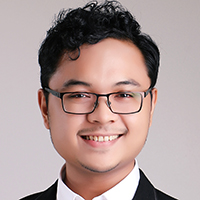Image may be NSFW.
Clik here to view.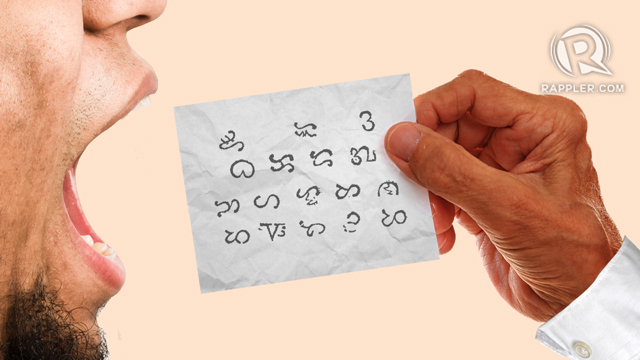
Image may be NSFW.
Clik here to view.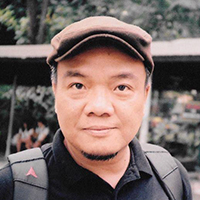 May isang pulitiko. Siguro nakapanood siya ng demo ng pagsulat ng Baybayin sa kung saang high-art at high-heeled cultural event sa Intramuros o Makati. Hayun siya, pinong-pino sa suot na amerikana, holding a goblet of what seemed to be some top-of-the-line bubbly champagne, kasama ang mga amigo at amigang produkto ng mga naglipanang political dynasty na anay ng bansa.
May isang pulitiko. Siguro nakapanood siya ng demo ng pagsulat ng Baybayin sa kung saang high-art at high-heeled cultural event sa Intramuros o Makati. Hayun siya, pinong-pino sa suot na amerikana, holding a goblet of what seemed to be some top-of-the-line bubbly champagne, kasama ang mga amigo at amigang produkto ng mga naglipanang political dynasty na anay ng bansa.
So, hayun, matamang nanonood si pulitiko, tangan ang goblet. Hindi pinapansin ang amigo na kanina pa tanong nang tanong kung anong oras sila magma-mahjong sa hapong iyon.
Napamangha si pulitiko sa demo ng isang full-time researcher ng isang inaamag na government agency at part-time Baybayin script demonstrator, na binabayaran ng P300 kada oras kasusulat, gamit ang pinsel, ng pangalan ng kung sinong gustong makitang nakasulat ang pangalan nila na parang kumikislot na bulate.
Ginagawa ito ni part-time Baybayin script demonstrator tuwing Sabado lang o Linggo, lest mag-absent siya at mabawasan ang kinikita niyang nasa ballpark ng SG 12 na narating lang ng kaniyang matatapos nang MA History sa University of Tabi-tabi.
Nagtaka si pulitiko, puwedeng napabulalas: “Uy, hanep o, ang gandah. Parang.... Basta, ang galing.... Wow, atin ’yan? Weh? Bakit di ko alam?” (Siyempre hindi niya alam. Kakaunti lang ang alam niya, like, minimal na kaalaman, kaya nga ang sagot niya kapag tinatanong ng pinuno ng House ay “aye” lang, lalo kung botohan.)
Tapos siguro nagpademo pa siya nang nagpademo ng Baybayin. “Isulat mo nga ang pangalan ko? Wow! Iyan na ba ’yun? Cooool. Eh ’yung sa asawa ko? Ang galeeeng! Sa mga anak ko? Panalo! Isulat mo nga pangalan ng biyenan ko? Panget talaga kahit sa Baybayin pa.”
Hawak niya ang pricey pulp paper kung saan isinulat ni part-time Baybayin script demonstrator ang kanilang pangalan. Mamasa-masa pa ang tinta. “Ipapa-frame ko ito, maliban ang sa biyenan ko,” sa isip-isip siguro ni pulitiko.
Habang pauwi, sakay ng kaniyang SUV na may V8 engine, at habang hawak ang smartphone na may unli-internet service, siguro nag-Google si pulitiko tungkol sa Baybayin. “Wow, ancient Tagalog script pala. Ang lupit! Bakit hindi ko ito alam?” Tapos siguro na-realize niya na kakaunti lang talaga ang alam niya. Kaya tumahimik na lang siya.
Siguro, habang nananahimik, muling inalala ni pulitiko ang trip niya sa Bangkok last month, nang mapadaan siya doon habang papunta sa Phuket. Tuwang-tuwa siya na hindi niya naiintindihan ang mga nakasulat sa billboard. Ang ganda ng sulat sa Bangkok. Hindi niya maintindihan. Naisip niya, “Sana meron ding ganito sa bansa ko.” Nang bigla siyang napatingala habang nakaipit sa traffic ang SUV niyang may V8 engine.
Nakita niya ang billboard ng fruit juice na gawa sa kemikal. Pamatid-uhaw. “Awww, sayang, maganda sana kung meron din tayong parang sa Thailand,” napabulalas si pulitiko, “Maganda sana kung marami tayong hindi naiintindihan sa mundo.”
“Teka, meron nga pala tayong Baybayin.” Tinawagan niya ang chief of staff kahit Linggo.
“Oy, nasaan ka? Ano? Binyagan? Gusto ko ng Baybayin. Oo, Baybayin, ’yung sulat-sulat natin na ancient na parang bulate.... Oo, hinde, oo, basta, ’yung napanood ko kanina. Ang ganda, parang kakaiba na kapareho ng sa Thailand at script-script ng Sanskrit at Chinese. ’Pakita ko sa iyo bukas. Oo, Baybayin. I-Google mo, tatanga-tanga ka. Ha? May nag-file na sa Kongreso? Naunahan ako? Ano ang bagong pagbobotohan? Sige, mag-a-‘aye’ na lang uli ako kapag tinanong. K, thanks, bye.”
Kinabukasan, nakahanda na ang papel-papel tungkol sa Baybayin. Naks. May quote-quote pa galing sa kung kani-kanino. Ayos. Mukhang seryoso.
“Pirmahan ko ito,” isang dakilang mithiin ang natupad ng pulitiko.
***
Pero siyempre, hindi ito totoo. Ang mahalaga lamang ay iyong totoo, na aprubado na komite ang House Bill 1022 o ang “Declaring ’Baybayin’ as the National Writing System of the Philippines, Providing for Its Promotion, Protection, Preservation and Conservation, and for Other Purposes” o mas higit na kikilalanin kung ganap na magiging batas bilang “National Writing System Act.”
Iyan, malapit-lapit na iyan sa katotohanan.
Kung ano itong Baybayin, one just needs to do a bit of Googling. I-type mo lang ang salitang “Baybayin.” O ha, ang ganda ng pigura, di ba? Meron pala tayo nito. Puwede ka pang magpasalin ng salita mula sa alpabetong kinasanayan natin patungong Baybayin. Hindi ko nga lang alam kung reliable. I-type mo lang sa Google ang “Baybayin translate,” at tadaaaaah, ang ganda ng kulot-kulot at kurba-kurbadang salitang katumbas ng gusto mong ipasalin.
Bueno, maganda naman yata ang hangarin ng batas. Huwag ’nyo na lang masyadong pansinin ang un-Congress-like explanatory note na nagpapanggap na academic paper ng isang iskolar na mahilig mag-quote ng kung sino-sino. Heto, binabasa ko ngayon ang pdf file na matatagpuan sa website ng Kamara.
Gustong ipatanghal sa atin, sa bawat pagkakataong pupuwedeng itanghal, ang Baybayin script para sa “respect and pride for the legacies of Filipino cultural history, heritage, and our authentic identity.” Ano man ang ibig sabihin nito.
Tatawaging “National Writing System” ang Baybayin, at para palaganapin ito, lahat ng etiketa, opisyal na ngalan ng mga pampublikong tanggapan, ngalan ng kalye, at mga pahayagan ay dapat na mayroong salin sa Baybayin.
Ipinagkakatiwala ng panukala sa mga ahensya at sangay ng pamahalaan ang pagsasalin, pagpapatupad, at pagtataguyod ng Baybayin sa kani-kanilang nasasakupan. So?
Wala naman. Hindi ko matawag na pangangailangan ito maliban siguro sa isang malaking hakbang na gawing novelty at i-trivialize ang Baybayin higit sa silbi nito bilang tattoo sa maraming culturally-inclined na rakista at privileged upper middle-class tambay: “Look how cool my tattoo looks oh, that’s my pet’s name in Baybayin.... Cute, ’no?”
Oo, masayang makita ang kikislot-kislot na simbolo ng tunog ng iyong pangalan ng iyong alagang aso, o tunog ng mga sikat na tatak ng toyo o sardinas o fruit juice na kemikal (auditory ang pagsulat ng Baybayin, sa tunog nakabatay ang baybay), pero higit sana dito ay bigyan muna ng prayoridad ang iba pang mas mahalaga. Pagbibigay ng premium sa sektor ng edukasyon, halimbawa.
Dahil bukod sa minamadaling mangmangin ang taumbayan buhat sa naglipanang pabrika ng disinformation, dapat ding turuan ang marami sa atin na hindi lang dapat sana puro “aye!” ang alam. Alam ’nyo na, parang ’yung pulitiko kanina. – Rappler.com
Bukod sa pagtuturo ng creative writing, pop culture, and research sa Unibersidad ng Santo Tomas, writing fellow din si Joselito D. De Los Reyes, PhD, sa UST Center for Creative Writing and Literary Studies at research fellow sa UST Research Center for Culture, Arts and Humanities. Board member siya ng Philippine Center of International PEN. Siya ang kasalukuyang tagapangulo ng Departamento ng Literatura ng UST.
Image may be NSFW.
Clik here to view.



